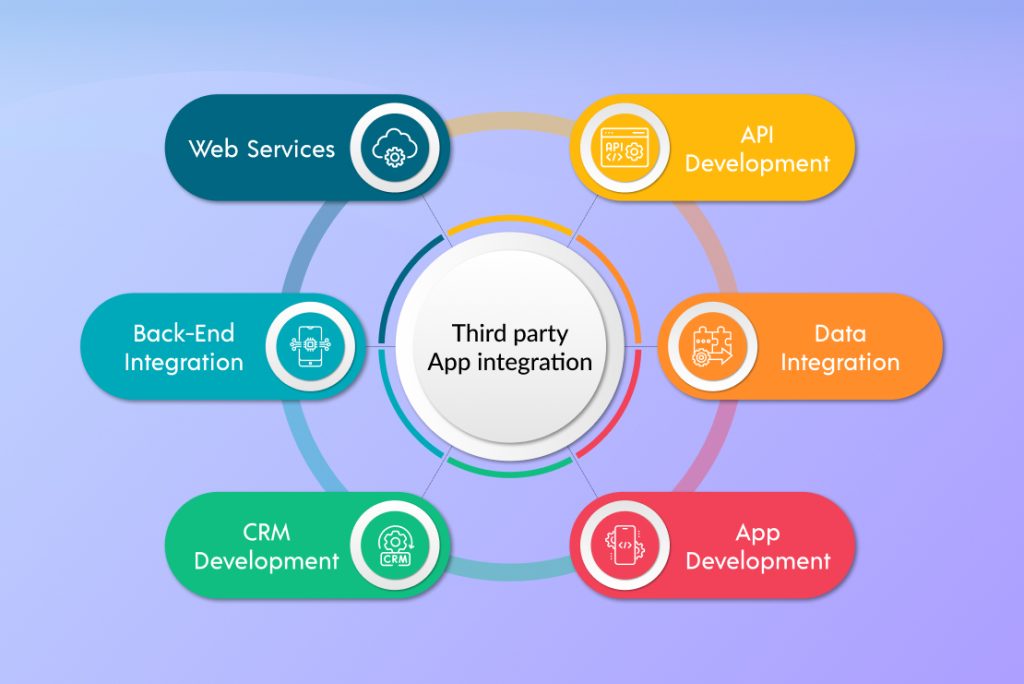The eCommerce world is constantly changing. Businesses find managing user expectations hard, as users always want better user experiences. This has encouraged companies to migrate to more composable eCommerce architects to manage their platforms quicker and deliver unique user experiences.
While there are many frontend-as-a-service providers, businesses prefer to use Alokai thanks to its advantages.
Our experience working with clients looking for Alokai migration gave us unique insights into the best practices to ensure a smooth transition.
If you are a business looking to migrate to Alokai, here are the best industry practices you must follow.
Why Should You Consider Migrating from an Existing Platform?
Businesses come to us looking to hire Alokai developers to help them migrate to a new platform.
They have diverse reasons to change their current platforms. The experience helped us understand what pushes them to make the change.
Some businesses want to change the platform as they have new directions for their operations. Others look to migrate because their current platform is not scalable.
Numerous concerns encourage a business to migrate to a new platform, as given below:
Mediocre user experience on your current platform
As a Alokai developer, we can confirm that user experience is a crucial element of the success of an ecommerce business.
With a mediocre user experience, a site can alienate users. Moving to a new platform that offers a more intuitive and user-friendly interface with simpler navigation is your best option.

This will make it easier for your customers to find products, make purchases, and complete transactions.
Enhancing the user experience will help you build trust, retain customers, and drive more sales.
Lack of adequate features.
You may need better and more functionalities, such as advanced inventory management, customizable product options, integrated analytics, or marketing automation tools when you grow.
And trust us; these advanced features will empower you to stay competitive, meet customer demands, and optimize your eCommerce operations for better results. If your current platform cannot provide these features, sticking to it will spell doom for your business.
Consider transitioning to a new platform offering a wider range of features tailored to meet your specific requirements when you understand your current platform is not enabling your growth.
Your current platform is not scalable.
Business requirements change according to user preferences, and scalability is essential for accommodating future growth and handling increased traffic and sales volumes.
When your current platform lacks the scalability needed to support your business expansion, migrating to a new platform becomes necessary. Lack of scalability is one of the biggest reasons our clients want to migrate to a new platform.
And they are right.
A scalable eCommerce platform allows you to quickly scale resources up or down based on demand, which ensures a seamless shopping experience even during peak periods.
That is what most of our clients want.
Your SEO efforts go in vain.
SEO is crucial to get visibility in search engine results, and your eCommerce platform must help you make your SEO efforts seamless. Your business may suffer if your platform lacks room for extensive SEO or has outdated SEO features.
From our experience, if you are not seeing any significant results for your SEO efforts, it is time to switch to a new platform that helps your site’s SEO.
A new platform with robust SEO capabilities will help you optimize your product pages, improve search engine rankings, and attract more organic traffic, leading to higher brand exposure and potential sales growth.
Related Article: 7 Reasons Why VueStorefront Headless Commerce Can Help You Grow Your Business
Seamless integration with third-party tools.
Third-party tools, such as payment gateways, email marketing platforms, CRM systems, etc., can help you make your store perform better. However, integrating these tools with your platform can be challenging.

When you cannot carry out these integrations, switching to a new platform with these capabilities is your best option.
A new platform with extensive integration capabilities ensures smooth data synchronization, efficient order management, and streamlined workflows. This enables you to leverage the best tools in the market and improve your site’s performance.
Lack of security and compliance features
Security and data protection is crucial for businesses to thrive in today’s world. Besides user experience, the lack of security can also bring legal consequences for your business.
Migrating to a new platform is the only option if your current platform does not have advanced security features. A new platform that stays updated with the latest security standards ensures you are not vulnerable to emerging threats.
Investing in a platform that offers better security and compliance helps you improve your brand reputation and user trust.
Why Should You Migrate to Alokai?
When migrating to a new platform, what should you consider? We get this question all the time from our clients. While some of them have decided to move on with Alokai, they want to ensure they make the right choice.
Others have no idea what they must do.
Here are a few reasons migrating to Alokai can be a great choice if you want to deliver a unique user experience for all your users.
It offers excellent PWA capabilities.
Alokai is built as a Progressive Web App, which allows your eCommerce store to offer an app-like experience to users across different devices.
This ensures faster loading times, offline access, and push notifications, providing a seamless and engaging shopping experience.
It is flexible with better customization.
Alokai provides excellent flexibility and customization options. You can tailor your eCommerce store to match your unique brand identity and business requirements using these options.
It ensures better performance and speed.
As Alokai is designed with performance in mind, it offers fast page load times and smooth user interactions.
Its optimized codebase and caching mechanisms help to deliver a lightning-fast shopping experience, reducing bounce rates and improving customer satisfaction.
It offers better SEO-friendly features.
Alokai has built-in SEO features that help improve your store’s visibility in search engine results.
These features, from customizable URLs to meta tags and structured data markup, enable you to optimize your product pages and attract organic traffic.
It delivers headless commerce capabilities.
With its headless commerce architecture, Alokai lets you decouple your eCommerce store’s front and back ends. This flexibility enables you to integrate multiple backend systems, such as ERP or CRM.
With this, you can deliver consistent shopping experiences across various web, mobile, and social media channels.
It is supported by a strong and active community.
Alokai benefits from a vibrant community of developers and contributors who actively contribute to its development and provide support.
The result? Regular updates, bug fixes, and access to a wealth of resources and extensions to enhance your eCommerce store’s functionality and performance.
Related Article: Why Headless Commerce? Let’s Analyze the Results with a Few Examples
How to Ensure Smooth Alokai Migration: Best Practices
Migrating to Alokai from your current platform is challenging. And we know that at AddWeb, we take every step possible to help our clients migrate to Alokai reliably and quickly.
Our experience has taught us that following a few best practices can help you work out the migration effortlessly.
When trying to migrate to Alokai or hire an Alokai development company in the USA to help you, ensure that they follow these practices without fail.
Do your homework before choosing a platform.
This is the first step of migrating to a new platform. You need to choose a destination platform. Doing adequate homework and research is crucial to make the right decision.
Failing to do your homework will set you up for failure on the platform.
Of course, we know that doing research, comparing options, and going through reviews take time and are expensive.
However, you know what is costlier–choosing the wrong or unsuitable platform and migrating from it all over again.
Map your new system thoroughly.
When migrating to a Alokai, you need to finalize what apps you want to keep and what you want to replace. Getting this sorted early in the process gives you proper direction.
It will also help you plan your migrating process effectively as you know what work is required when you keep an existing app and need a new system.
Mapping your new early will also help you understand how to care for each touchpoint on your platform.
Make a list of vendors you can associate with.
While many Alokai developers in India meet your requirements, you must do your homework to choose the right vendor.
You can also send out requests for proposals from carefully chosen vendors to understand the market trend.
With the proposals you receive, you can also engage with numerous vendors and understand their capabilities before finalizing one.
Make your Total Cost of Ownership and revenue model.
Understanding your future cost and revenue is vital to make the right decision. What you can do here is create a TCO and revenue model to predict your expenses and income.
The TCO can be developed using the purchase, maintenance, and all other costs. Similarly, you can also create a revenue model to compare the cost and revenue.
The revenue model must be at least three years and be based on your historical sales and growth data. Based on the insights you arrive at, make the migration decision.
Develop a strategy for data migration.
One of the most critical aspects of Alokai migration is transferring data to the new platform. It would be disastrous to do it without a strategy.
The data usually includes:
- Product information
- Customer data
- Order history
The strategy must be able to ensure data integrity and accuracy while migrating. One of the biggest problems you can face when migrating to Alokai is losing track of your data during migration.
To avoid this, create a strategy and stick to it.
Test your platform thoroughly before going live.
While this is self-explanatory, many businesses still skip this if they have a tight schedule. As an experienced Alokai migration, many companies overlook this part.
However, never do that. Take your time to check every aspect of your migrated store on various devices to ensure seamless performance.
Testing will help you identify and remove any bugs before the store goes live.
Constant monitoring and optimization
Even after the site has gone live, you must continuously monitor and optimize it to ensure better performance.
Doing so will help you make your store more user-friendly and perform better, bringing you more sales and revenue in the long run.
Conclusion
Ensuring top-notch user experience is the key to improving your eCommerce sales and revenue. AddWeb has learned this by working with industry-leading brands and businesses for years. We can leverage our expertise and industry knowledge if you want to migrate to Alokai.
Our team consists of expert Alokai developers and strategists who can make the transition seamless without disturbing your current operations. We also can create a unique migration strategy to deliver maximum value for you.
We focus on our client’s goals and expectations regarding Alokai migration. You can check our portfolio to understand our expertise in the field.
Contact our customer service team to learn more about us to ensure a seamless, quick, and reliable migration to Alokai.
Frequently Asked Questions
Migrating to Alokai offers a modern, flexible, and scalable architecture for your eCommerce store. It enhances performance, provides a better user experience, and supports headless commerce, enabling future-proof solutions.
Benefits include improved website performance, enhanced user interface, flexibility for customization, support for progressive web app (PWA) development, and the ability to leverage headless commerce for seamless integration with backend systems.
Plan meticulously, conduct thorough testing, and communicate with your team and customers throughout the migration process. Gradual transition strategies and backup plans can minimize disruptions.
While a redesign is not mandatory, migrating to Alokai provides an opportunity to refresh your website’s design. You can maintain the existing structure or use Vue Storefront’s flexibility for a more modern look.
Yes, Alokai supports the migration of product data. Data migration tools and processes can be employed to ensure a smooth transfer of product information, categories, and other relevant data.
Alokai supports various payment gateways, and the migration process involves updating or reconfiguring these integrations. Careful testing is crucial to ensure that payment transactions remain seamless.
When adequately executed, migration to Alokai should be fine with search engine rankings. Implementing proper redirects, updating meta tags, and ensuring SEO best practices are followed can help maintain or even improve rankings.
